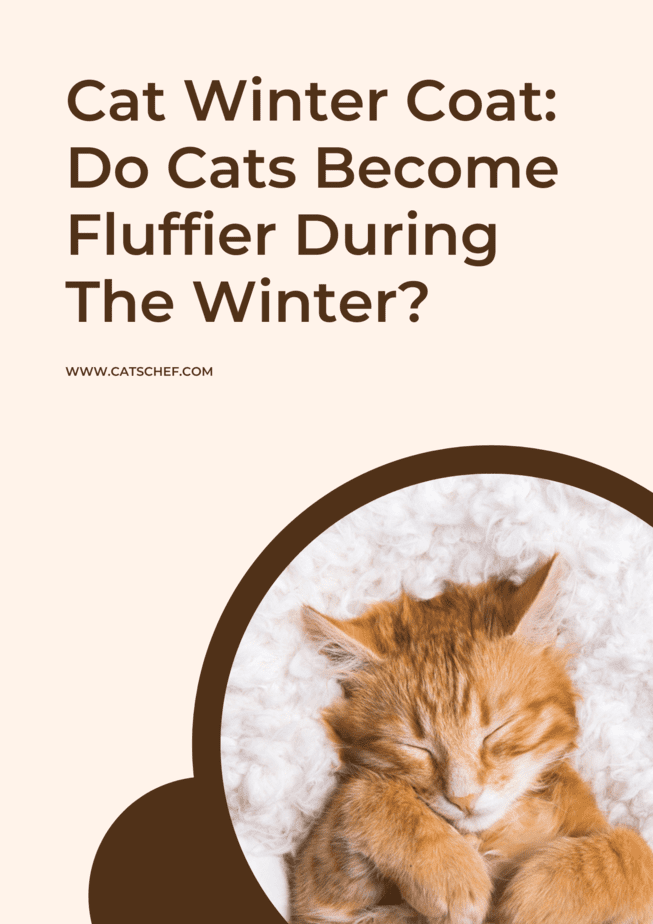“Hear me out – you need a cat winter coat because I don’t want you to freeze to death!” you try to reason with your fluffy friend while she refuses to give you the time of the day. “You do appear fluffier than ever, but I’m not sure it’ll be enough,” you repeat to yourself, hoping she listens.
But she doesn’t because she’s not that fond of being told what to do. And let’s be honest, you weren’t expecting her to accept wearing a fashionable winter coat purely because you asked her to… nicely. Cats aren’t known for being easy to manipulate or reason with.
On the other hand, you were hoping that her neverending need for anything “wintery,” “furry,” and “aesthetically pleasing” (that one’s more for you) would make her reconsider wearing something warm during the winter. She’s such a fashionable queen, but only when she wants to.
But, your concerns might not necessarily have standing grounds – cats don’t typically freeze to death because of their humans not providing them with warm, fuzzy winter coats. Cats have coats of their own and they grow them right before the winter starts, and right after they shed the one they had beforehand.
“Come on, kitty! What’s wrong with purchasing ONE cat winter coat? One you at least can wear when we go outside!” you utter under your breath, knowing your mischievous monster’s not listening. She’s not even there – she left the room moments after you started bugging her with your Vogue suggestions.
Here’s the thing. Most cats don’t really need anything other than their own fluff to keep them warm during the winter. They’re purrfectly capable of taking care of themselves because that’s exactly what their ancestors did when they didn’t have you to help them.
What’s a cat winter coat?
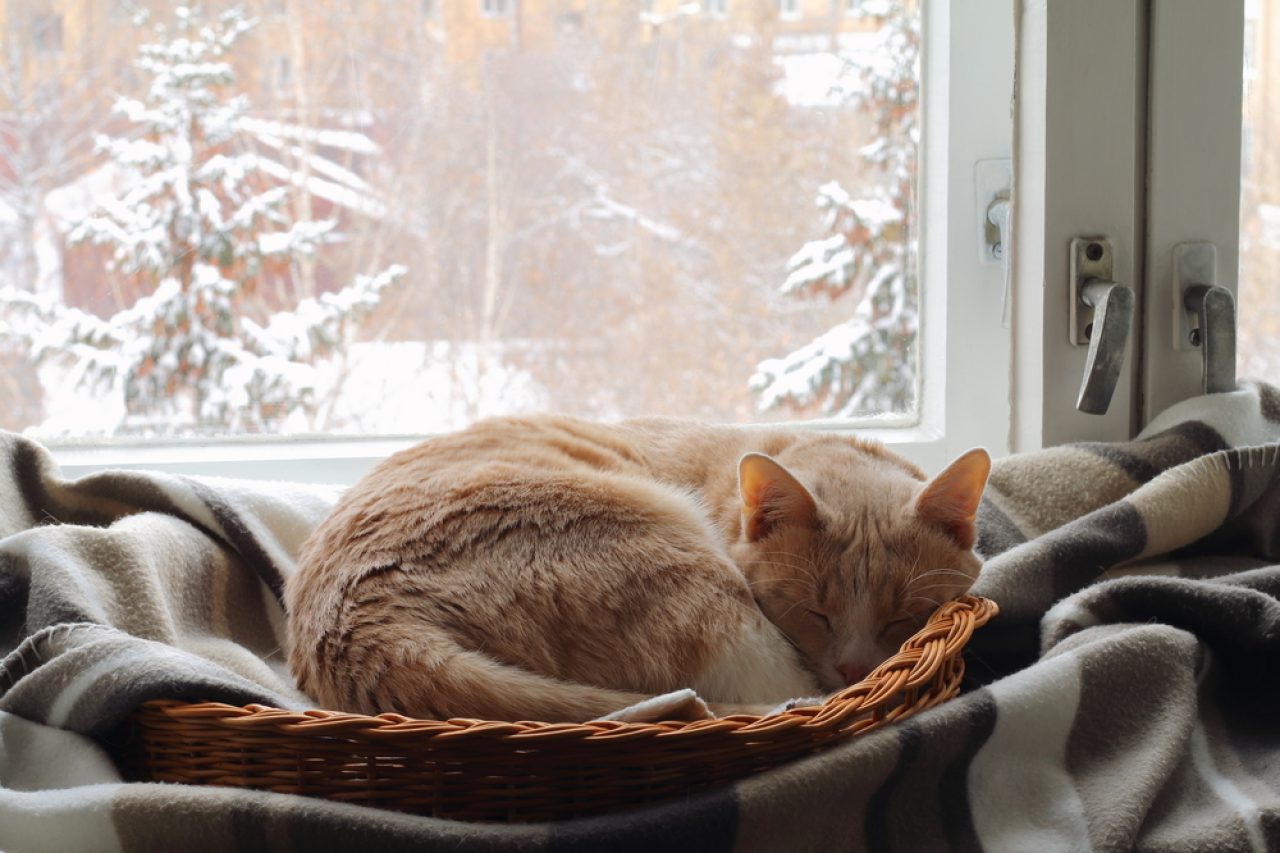
Sure, those adorable little coats you see everywhere on TikTok are trendy and you can try to make your four-legged friend wear them for a video. But, she’s got a pretty trendy coat of her own and you’re about to have your mind blown when you learn where that coat comes from. Hint: it’s not Gucci.
Cats know how to dress appropriately for each season. Don’t be surprised when you notice your cat sporting a thinner coat during the summer and a thicker one in winter. Keep your fans and air conditioning devices to yourself, she can regulate her own body heat impeccably.
And, to be completely serious, your cat’s coat plays a super salient role when talking about your cat’s health and happiness. Not only that, but the entire process of growing a winter coat is a complicated one. Your cat should be applauded for such an endeavor each year.
First things first, what exactly do we mean when we refer to a cat’s winter coat? We refer to the layer of fur surrounding your cat’s body that becomes thicker during the winter. As a matter of fact, when you take a closer look at your cat’s fur, you might notice there are two layers.
One of the two layers seems to be comprised of those beautiful hairs that make up the smooth outer coat you see whenever you look at her. You can’t see the other layer because it’s hidden underneath those hairs. But, it’s this “undercoat” that’s responsible for growing thicker, providing additional insulation, and keeping your cat warm.
And, of course, both of the layers protect her from things such as chemical damage, sunburn, scratches, cuts, and accidental contact with hot surfaces. Not to mention help her regulate her body temperature!
Can cats grow winter coats?
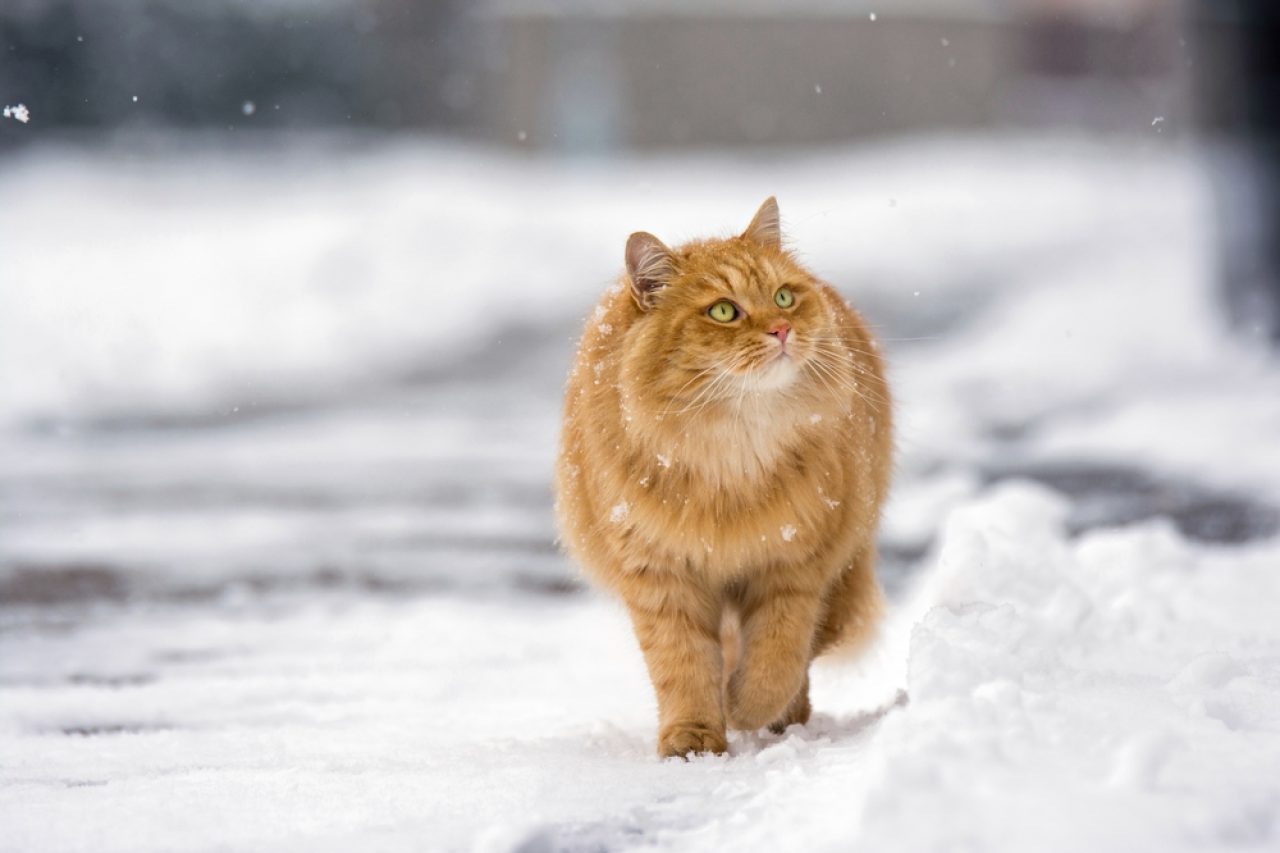
Yes, cats can grow winter coats! You don’t need to purchase clothes for your furry friend (though we do understand that Gucci’s got some pretty adorable stuff). Your cat’s got everything under control – growing a winter coat is the most natural thing she could do during the colder months.
But, but, but… Let’s not discuss this whole winter coat thing without touching upon the dos and don’ts of feline fur, shedding, and molting. We’ve mentioned feline fur to a certain degree already. We’ve touched on the fact that cats have two different layers of fur, each with their own separate roles.
And, each cat breed differs based on the amount of fur she can grow (longhair cats grow more fur and shorthair cats grow less, obviously). As a matter of fact, the layer of fur that gets bigger and thicker during the colder months seems to be the inner layer, the undercoat.
Actually, the undercoat seems to be the place where the magic happens. When trying to regulate their body temperature, cats naturally move their hairs (a process known as thermoregulation). When they’re cold, they bring their hairs closer together, and when they’re warm, they push them apart.
And, cats start the shedding process as soon as warmer days arrive. They get rid of their winter coats and resort to something a little thinner (much easier to groom, too!) Anyway, take a look at how different types of cats grow their winter coats.
1. Indoor cats
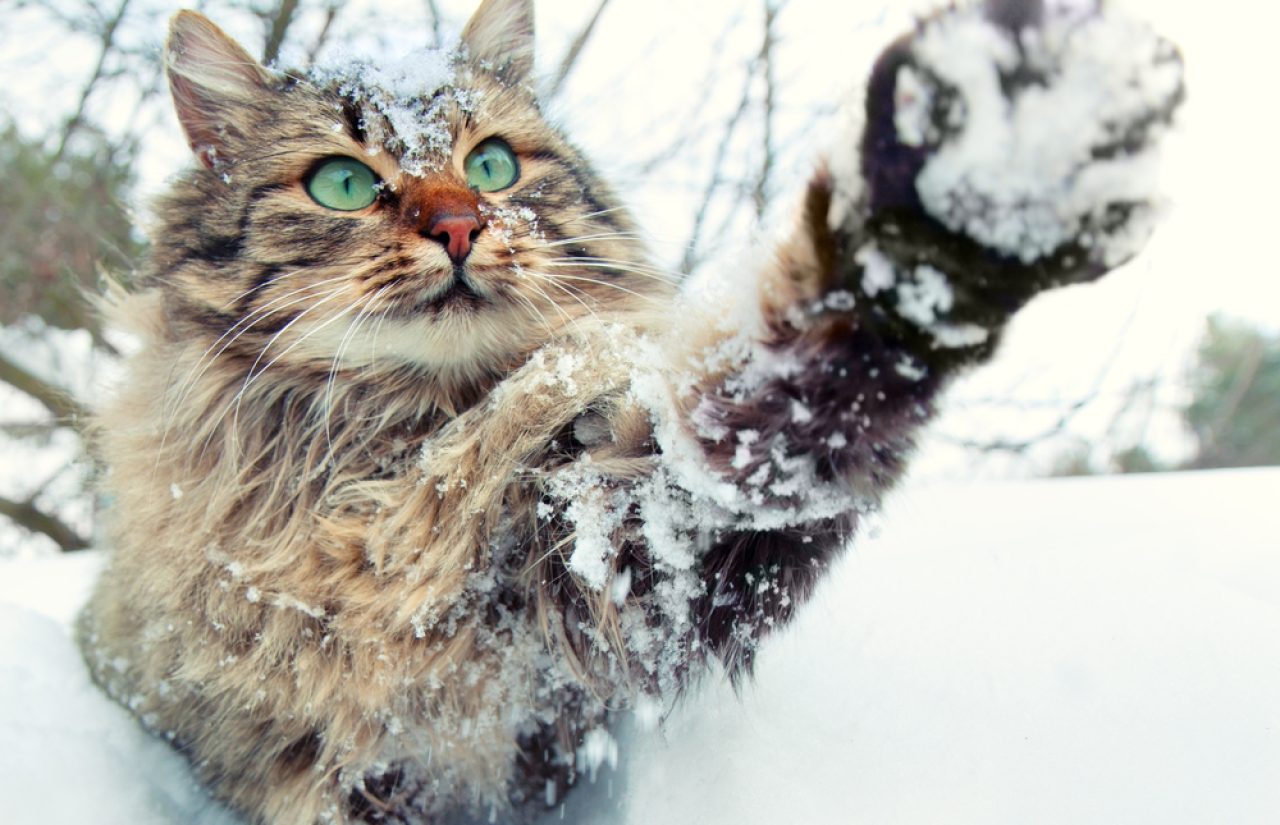
You’d be surprised at the number of pet parents who get confused when they learn that their precious pets grow winter coats. They mistakingly believe that their definitely-not-outdoor cats don’t really need thicker winter coats. They spend most of their days lounging under a blanket, right?
But, that’s not the case. Cats don’t actually make their coats bigger and thicker for the winter based on temperature but on sunlight. That’s right, your little munchkin starts working on her winter coat the moment the number of daylight hours decreases.
What does that mean? That means that your little friend (who presumably stays inside for most of the day) doesn’t get spared the seasonal shedding, neverending brushing, or grooming. When you notice that winter’s coming, prepare your brush, broom, and vacuum. You won’t be able to do this without them.
2. Outdoor cats
“Growing a cat winter coat makes more sense for outdoor cats. They spend their winter outside, napping on top of a snow heap, and meowing for mice to come out and play.”
That’s kind of right. Every cat, whether living inside or outside, goes through the period of shedding, growing a thicker coat, and shedding again.
That being said, outdoor cats do require thicker coats because they spend most of their time outside in the snow. They need something bigger and better to combat the cold. And, they certainly need something warmer than the cats living in the comfort of their human’s house.
3. Longhair cats
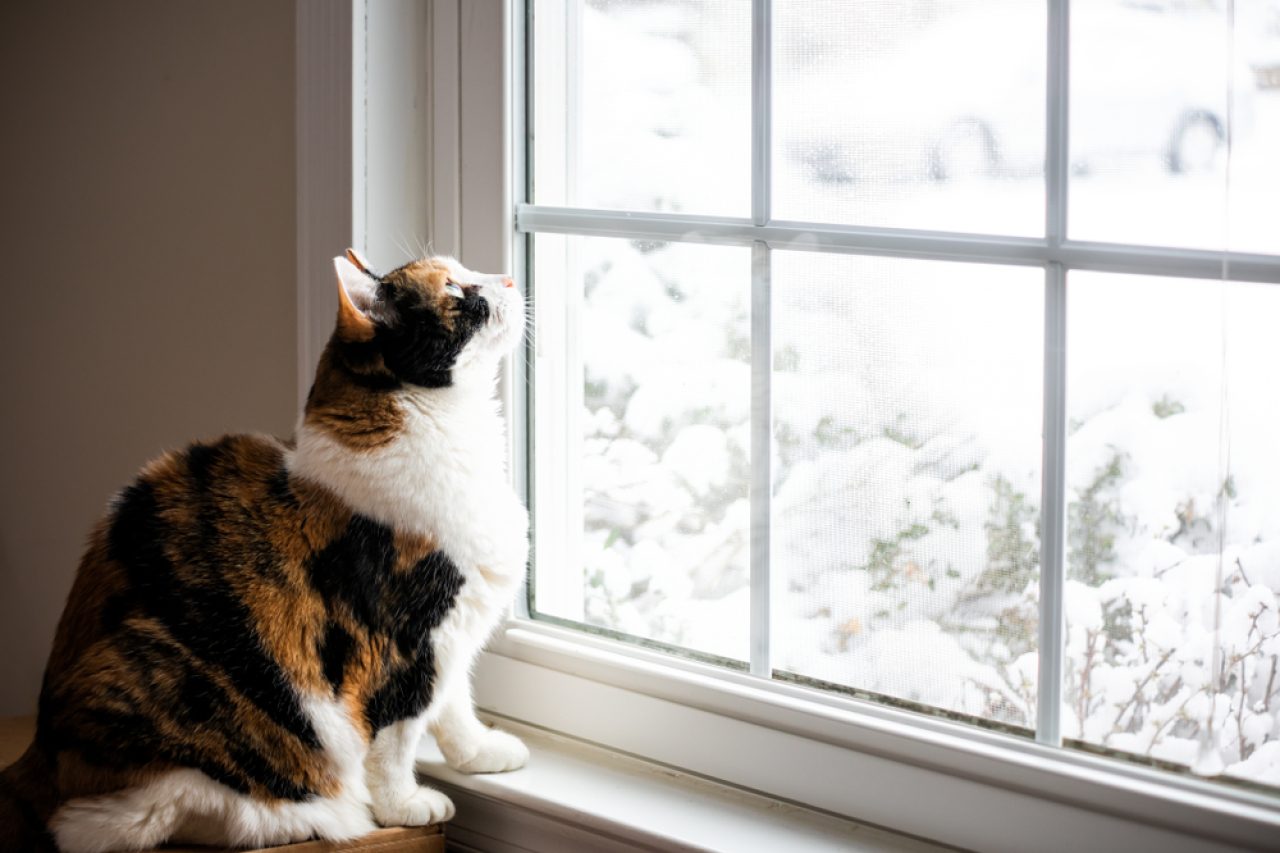
“Can longhair cats grow their winter coats? The obvious answer would be ‘yes,’ but you can never be completely sure with cats!”
We can’t argue with that one. The entire process of growing a winter coat depends on different factors such as the breed, the sunlight, the temperature, and other stressors.
Longhair cats such as Maine Coon are more likely to shed twice (or even more than twice) a year. They require daily brushing and grooming and generally a bunch of work to keep their coats happy and healthy. They grow their winter coats thicker than shorthair cats.
On the other hand, Siberian cats are more likely to live somewhere where it’s extremely cold because they’re accustomed to such conditions.
They’re also more likely to grow their coats thicker to regulate their body temperature and ensure they don’t freeze to death. Even their paws are shaped like snowboots!
4. Shorthair cats
“So, when I’m looking for a cat that doesn’t shed as much as a Maine Coon, I should go for a shorthair cat? Do shorthair cats grow their winter coats, or…?”
You’d think that you wouldn’t have to worry about grooming, shedding, and cleaning a shorthair cat. But, that’s actually a pretty common myth.
Shorthair cats shed as much as any other cat. They grow their winter coats even though they don’t seem to have that much fur on their bodies. Some pet parents might not even notice their shorthair cat’s gotten thicker overnight, but she probably has.
Shorthair cats require very little grooming because their coats are short and close to their skin. When they grow their winter coats, they become rounder and fluffier. But, their fluff is nowhere near the amount that fluff Maine Coons and Siberians possess.
5. Hairless cats
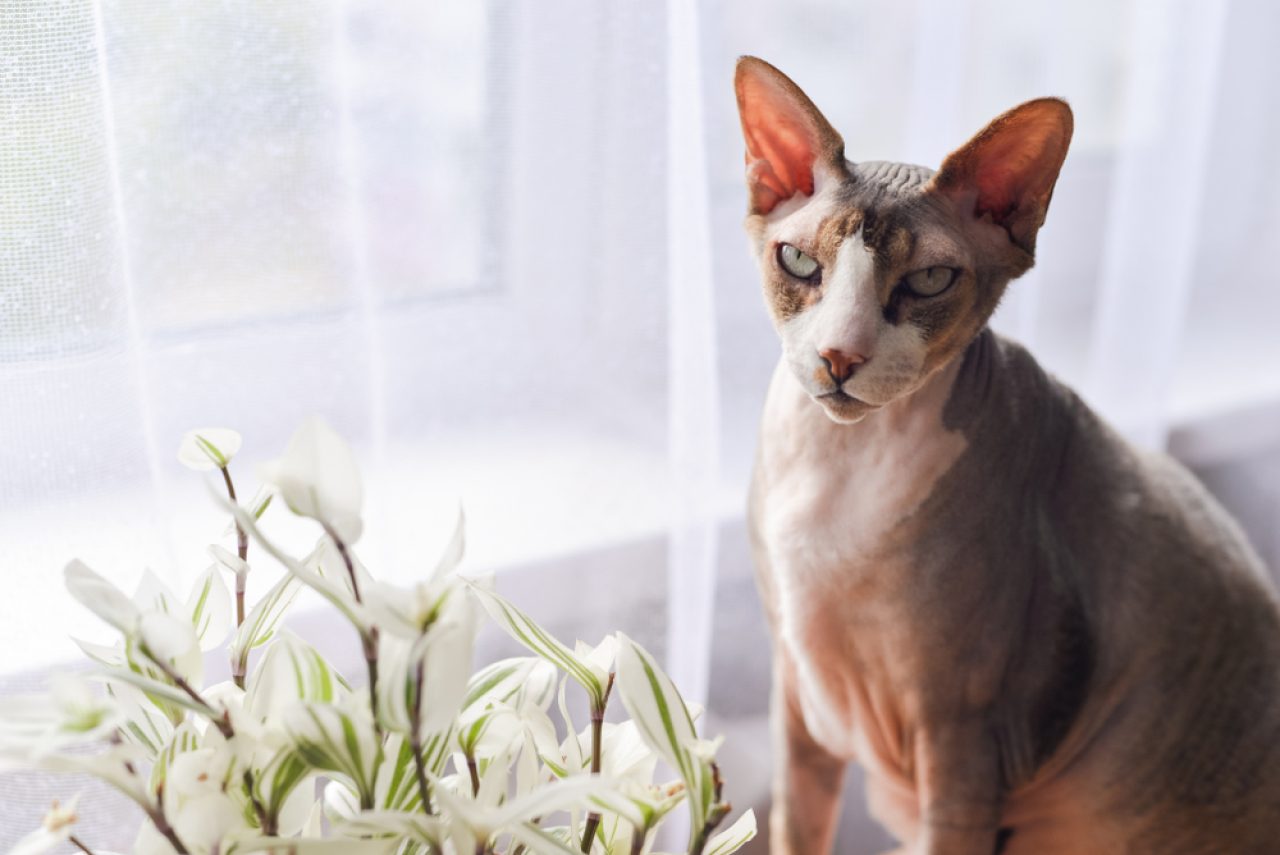
“Wait, not you’re going to tell me that hairless cats grow their winter cats, too!?” We’re not – hairless cats can’t grow their winter coats, as they can’t grow their fur at all.
That’s not to say that hairless cats are completely hairless. They have a little bit of fuzz on their backs and tails. But, it’s typically not noticeable. They’re referred to as “hairless cats” because that’s much easier to say than “cats with a little bit of hair on their backs and tails,” right?
And on a side note, should you notice your Sphynx growing more hair than usual, you should contact your vet. She might not be happy with the temperature of your apartment and you might need to move her somewhere warmer – or purchase that adorable little Gucci coat. (What?! She clearly needs one!)
How do cats grow their winter coats?
“A cat winter coat? More like, a cat winter process that takes way too much of your time, space, and energy!” And that’s the harsh reality of being a pet parent.
Don’t get me wrong, we love our precious purrers to death. But, when they start shedding and leaving their hair everywhere, that love temporarily flies out of the window.
We’re kidding, kind of. But, we can’t close our eyes to what our cats are going through because we’re responsible for keeping them happy and healthy. We can’t refuse to brush them, groom them, and clean after them when they leave a mess of fur behind themselves.
But, we can learn how to deal with these changes. And, we can learn when and how these changes occur. So, here’s what happens when your furry friend decides to grow her winter coat (and pretends like her hair isn’t flying everywhere around the house).
1. Shedding before winter
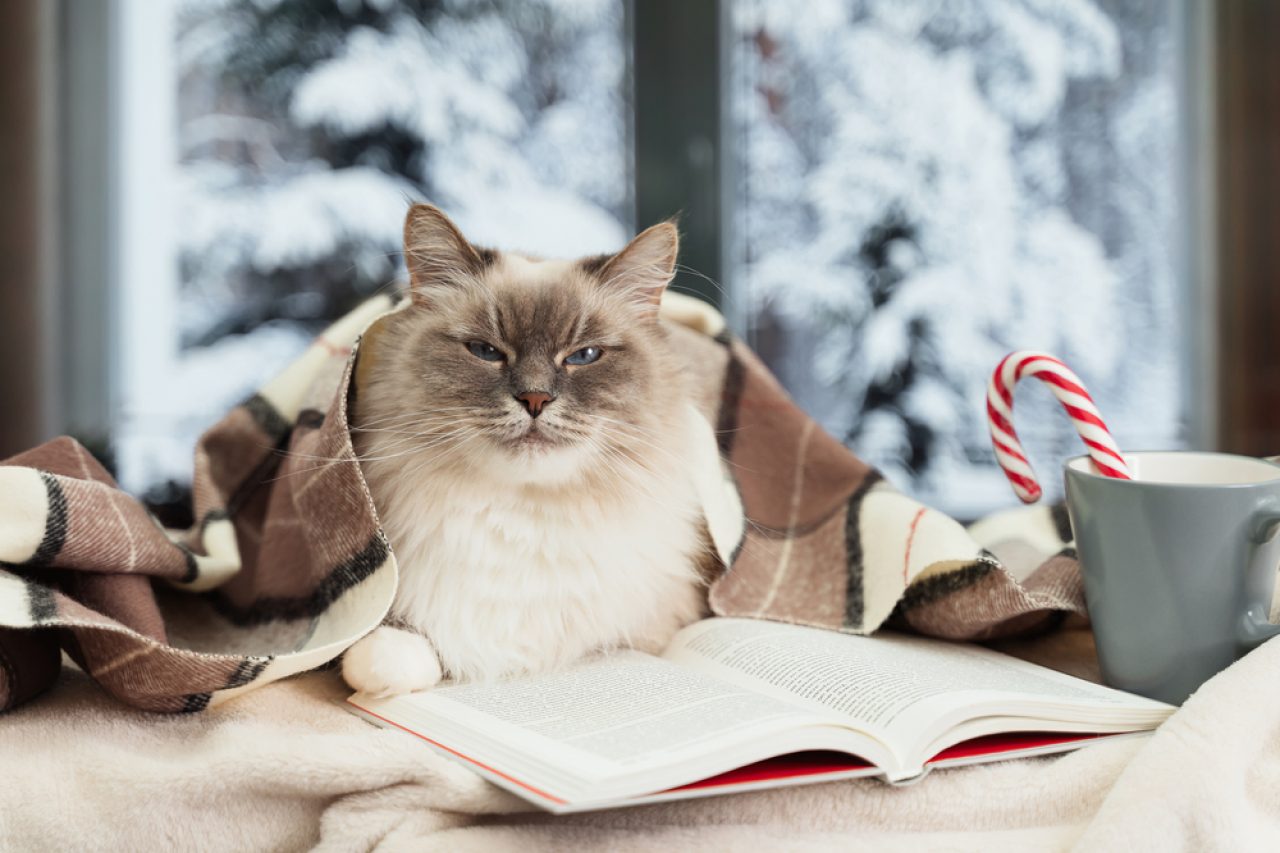
We’ve already mentioned how a cat’s coat typically possesses two parts. And, the part that’s closer to their skin is the one that grows thicker during the winter. Unfortunately for every pet parent out there, that part doesn’t just appear out of the blue.
For a winter coat to grow thicker and fluffier, the summer coat needs to go somewhere. This process that happens before your cat grows her winter coat is what’s known as molting.
Molting happens right before winter (or right before she starts growing her winter coat). During the molting phase, your cat might need even more help with brushing her fluff and grooming her. This way, you won’t only ensure the fluff doesn’t go everywhere it shouldn’t – it’s also a great opportunity to bond.
Skipping over the meticulous grooming during the molting phase might lead to a bunch of problems – more hairballs, skin irritations, rashes, and hives, as well as more hair around the house. Brush, brush, brush, and the two of you should get through this phase… unphased!
2. Getting used to the cold during winter
That’s right, your not-so-little ball of fluff might need some time to adjust to the cold (especially if it’s the first winter she’s ever experienced!) Even though she’s grown a thicker coat, your cat’s used to being warm, cozy, and cuddled up around your legs, and she might need some time to figure things out.
Don’t be afraid to let her play outside of the house – the cold, the snow, and everything that comes with winter might be a great way for her to build confidence and resistance. You can keep your doors open so that she can come and go as she pleases. Or you can even take her out for a walk every now and then.
Don’t be discouraged when you notice she prefers spending time in the house. Most cats prefer warmer days – not because of the temperature, but because they have better things to do. They can run around, chase after mice and bugs, and bake their little beans in the sun.
3. More shedding after winter
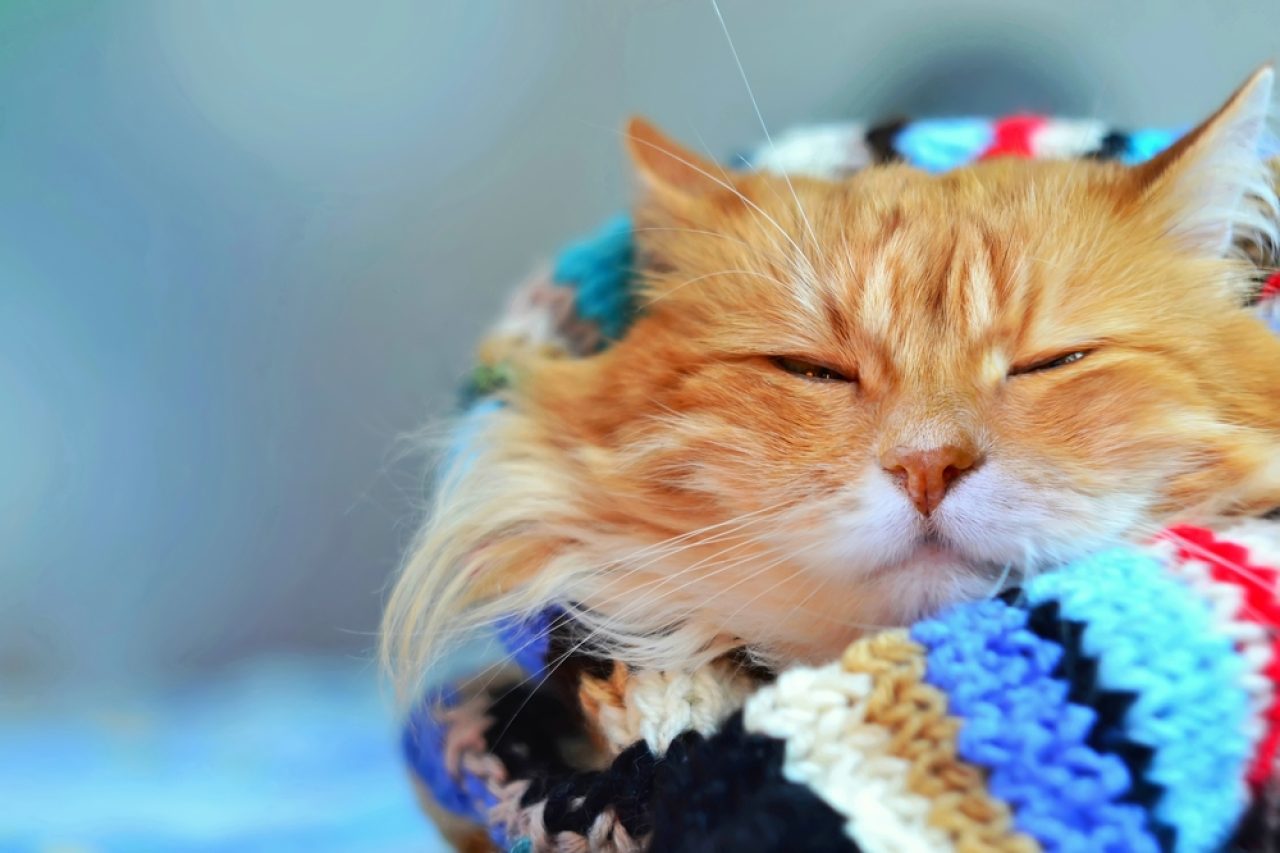
And, of course, don’t be alarmed when your cat starts losing her winter coat. When winter comes to an end, you might notice your cat getting slimmer (and your house getting flooded with tufts of fluff flying everywhere). And you know what that means – another round of brushing, brushing, and more brushing.
A friendly reminder: Most pet parents feed their cats a bit more during the winter. That’s completely fine (even welcome, because growing a cat winter coat requires a lot of energy). But, that means cats typically put on a little bit of weight during the colder months.
Make sure the two of you start eating healthier the moment that she starts shedding again. She won’t be needing that much food during the warmer days and months anyways. But, you can always consult with your vet about her needs and how they’re changing.
How to keep your cat warm during the winter?
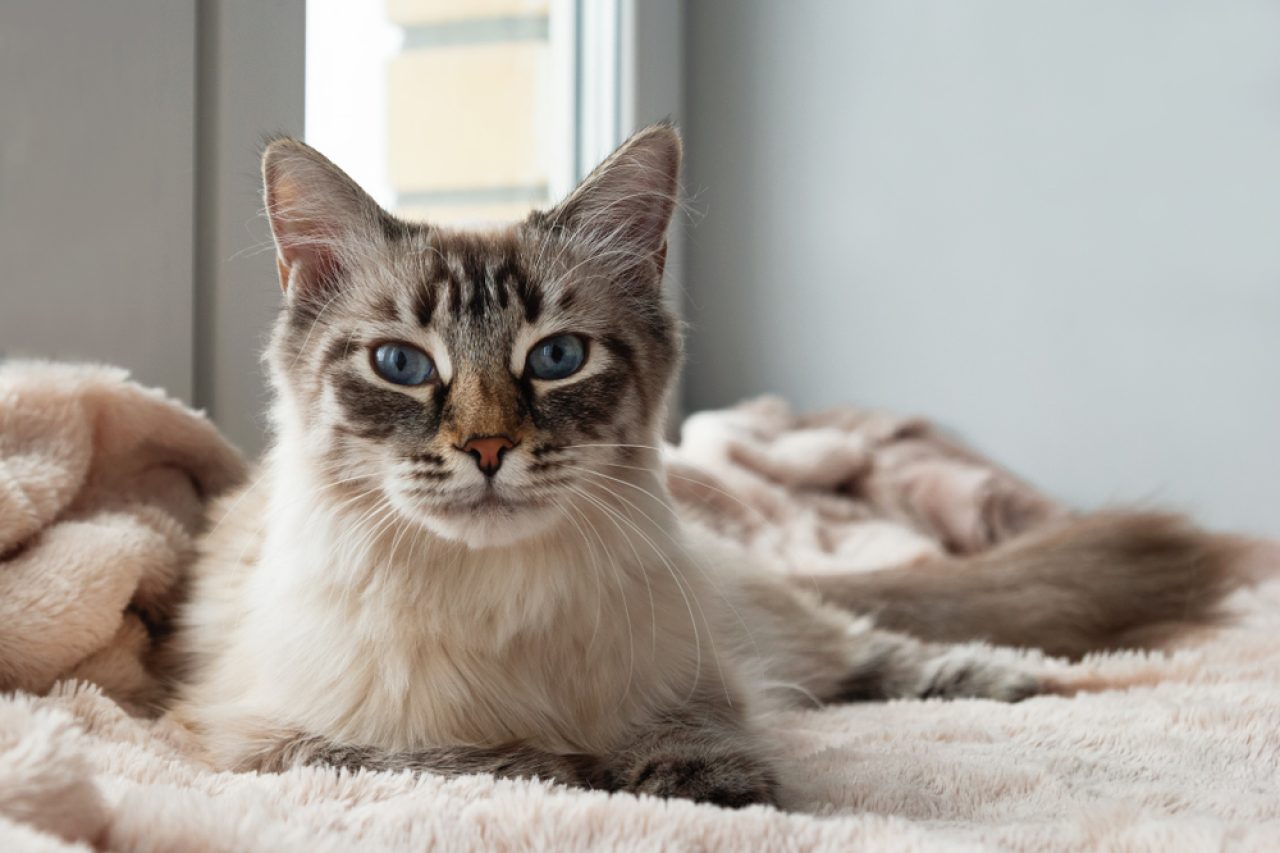
“But, why does it seem like my cat’s cold during the winter? She’s grown her winter coat, she’s fluffier than ever, but she often seems like she’s “vibrating” and shivering. Could it be possible that she’s cold regardless of her coat?”
Of course, cats can get cold the same way humans can. Longhair cats are typically accustomed to the winter (because of their ancestors and their longer and thicker coats). But, shorthair and hairless cats might struggle to keep themselves warm enough, even when they’re someplace safe and secure.
Make sure you keep your house as cat-friendly as possible – for instance, prepare a couple of warm spots throughout the entire house for your cat (or your cats) to lounge on. Securing a couple of fluffy rugs and warm cat beds around the house might help your cat feel more comfortable.
Refrain from putting cat clothes on a longhair cat (because of overheating). But, nothing’s stopping you from clothing your shorthair or hairless kitten. Consult with your vet (always, before you do pretty much anything), and when you get a green light, feel free to take your little munchkin shopping.
Don’t forget to take good care of your cat’s little paws during the colder months. They are super sensitive to cold. And, they can also become affected by the antifreeze and salt from the streets. Even worse, she could accidentally eat these from her paws and get really, really sick.
What have we learned? Cats go through an extensive process of winter preparations. They grow their coats thicker and fluffier. They shed their summer fluff because they (like you and me) love sporting a new outfit. And, they go through a lot of trouble to keep themselves warm. Long live the kitty!
